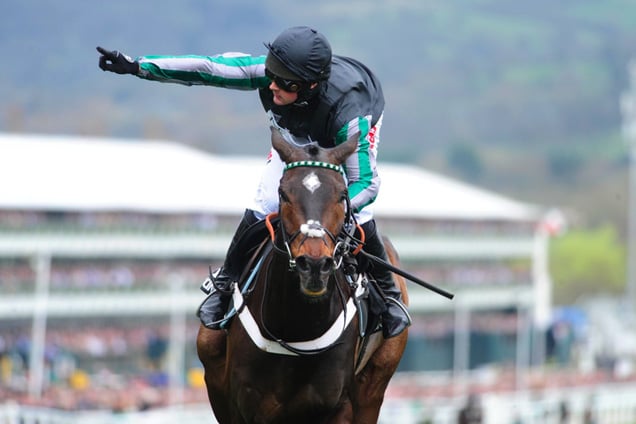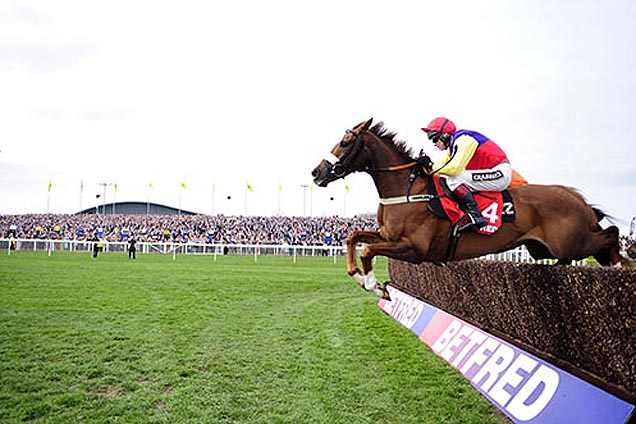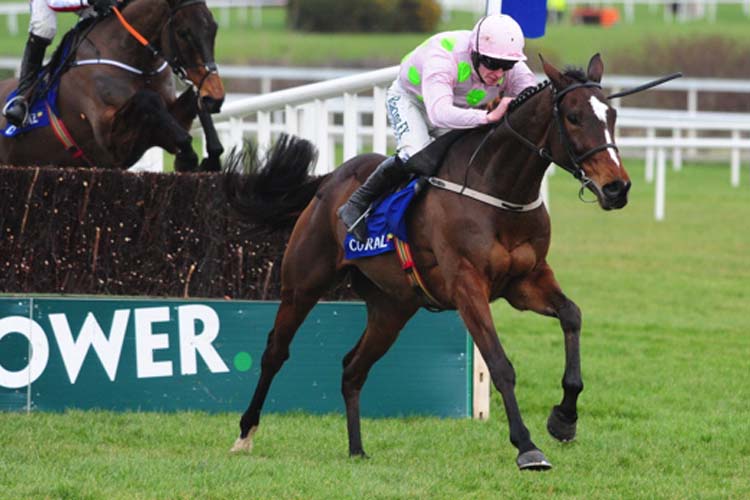Getting to the top is easy, staying there is the difficult part.
Sometimes, there are two races in one, like those involving Frankel, or when there’s a jockeys’ or trainers’ title on the line, or maiden hurdles in Ireland. But for Altior, and indeed Native River, it’s an issue of three races: the ready-making race at Newbury, the king-making race at Cheltenham, and the make-or-breaking race against time in between.

‘I suppose this is the time he is going to be at his most vulnerable,’ said Nicky Henderson of Altior’s assignment in the Game Spirit, ‘but in the interest of trying to win the Champion Chase I think it’s good for him to have a run.’
To bounce or not to bounce, that is the question, and the abstract menace that requires micro-management, the sinister ‘skip’ of a hop-skip-and-jump approach to the Festival. The predicament is the tight squeeze, a matter of balance and margin: the fine balance of the reappearance rev-counter, because the timeframe means there’s no margin for error.

It’s target training at the edge, and Altior is locked onto Min, whose campaign is a worry for Altior in more ways than one. Almost as significant as Min’s coming-to-get-you statement in the Dublin Chase last Saturday, his Christmas crisis was, in part, a dangerous directive for Altior, for what can go wrong after so much is put into a comeback from a non-routine absence, like his steamroller job – by 36 lengths – at Gowran. The ‘bounce’ in itself isn’t quantifiable, but neither is mindset, naivety, conduct or any of the other reasons put forward for Min’s subsequent display at Leopardstown where he did more wrong than right and handed the race, via the stewards, to Simply Ned.

The complex specifics are concealed within the specific complex: the bounce.
But the point is that, at that stage of the season, Willie Mullins had time and opportunity to reprogram and refresh Min, to course-correct for Cheltenham, and the affirmative answer was a 12-length destruction of the same horse.
Min had some leeway that Altior doesn’t, due to returning as late in February, making it a rush for Cheltenham, rather than a Buveur d’Air-style amble, which has left Nicky Henderson with a different dilemma, by his own admission, but also by his own hand: ‘[Buveur d’Air] hasn’t had a race as such this season, and that’s the worry.’
Henderson has been here before with horses of an identical standard, coming off an identical run up, to Altior this year. Let’s have a quick skip through them for a lesson from Henderson history.
REMITTANCE MAN (1994)
At the time he injured his off-fore tendon in the Peterborough Chase at Huntingdon in November 1992, Remittance Man was jumping’s star attraction. Altior was 12 out of 12 over jumps prior to his setback; Remittance Man was 12 out of 13 before his, including the 1992 Champion Chase. Gearing up again for that race in 1994, Remittance Man returned in February, from 15 months out, with a smooth success in the Emblem Chase at Kempton, but wasn’t himself a month later when favourite at Cheltenham, under the pump when falling at the third-last.
TIUTCHEV (2002)
Not the same length of absence as either Altior or Remittance Man – 266 days in his case – but Tiutchev had the same objective – the Champion Chase – and the same approach, of one swing of the bat pre-Festival, likewise in February. In the warm-up he hit a home run, carrying a big weight in a handicap at Sandown, only to fade into fifth when 5/1 in the main event, albeit suffering a bout of colic in between.
SPRINTER SACRE (2015)
The rut made him mortal and the renaissance made him immortal. But that rejuvenation came a season after Sprinter Sacre made a hop, slip and flunk of an attack on the Champion Chase, finishing a shoulder-shrugging second in the Clarence House at Ascot (off a 13-month absence) before feeling the pressures of the pumping preparation all the more at Cheltenham, pulling up. The smoother schedule of the 2015/16 season put him back on an everlasting pedestal.
RIVERSIDE THEATRE (2012)
Different distance, same scenario, happier ending. A stress fracture of the pelvis kept Riverside Theatre off the track for exactly a year, until the Ascot Chase in February, returning with a bang that became a bang-bang in the Ryanair at Cheltenham just 26 days later, hard work but high praise for the delicate matter of a double-shift, masterminded by Henderson.
Timeform has conducted several studies in the area of what to expect, or not, from horses off an extended break, on their first run back, statistically speaking. And the statistics speak of around a 16% chance of Altior running to his peak, of 175 in his case, in the Game Spirit on Saturday, based on the absence involved.
But the theme of this article, and the theme of this weekend, is not of the simple arithmetic involved in a horse hitting the ground running after a long lay-off, but the more complex conundrum of to what extent the engine needs to be tuned with Cheltenham looming fast. From the above list, Remittance Man and Tiutchev – and even Sprinter Sacre that season to some degree – are uneasy examples of losing the war perhaps by winning the comeback battle. Riverside Theatre is the odd one out, far more than you might think.
We – and by ‘we’ I mean @UTVilla – drilled deep into the Timeform data for similar scenarios, analysing the good-class chasers (rated 150+), since the start of the 2005/6 season, who returned from a protracted absence (275 days or more), post the New Year, and ran again within 40 days. Basically, assessing the Cheltenham-class chasers who found themselves rushing to Cheltenham. Riverside Theatre is indeed the outlier, as he was the only one, from a long list of 106 qualifiers, who won both on his comeback and his next race. That’s an eye-opening statistic.
The graphs below paint a ratings picture of the many who sink and the very few who swim. Comparing their pre-absence best to their comeback run and then their next outing (within 40 days, marked as comeback +1), the first diagram shows the batch who improved their rating, numbering just six. The next chart illustrates the handful – only ten – who more or less picked up where they left off and maintained it to the run after, operating within 10 lb of their known level. The bottom diagram tells the well-worn tale of a well-trodden path for the majority who weren’t the same, including all of those who dipped after the false dawn of an upbeat return.
What it tells us, combining all three, is that, for starters, Altior – and Native River for that matter – need to run to at least 150 first time back to give themselves any chance of rescaling the ratings mountain they once climbed. Anything less than that and it’s too much, too soon, to turn it around in time for Cheltenham. A defeat, in itself, isn’t necessarily a barrier, yet winning both is very hard to do, as Riverside Theatre, and only Riverside Theatre, has shown in the last dozen years.
‘Nicky gets them well-tuned and ready without being over the top.’ That’s what Barry Geraghty said in the aftermath of Ascot, and that’s the key to this particularly tricky business, as well as the paradigm for Altior.
Rarely, if ever, does the art and craft of training count so much as playing the Goldilocks game of the race within a race within a race. Too hot reappearing, and the coolant is poured on. Too cold coming back, and no microwave can warm it up in time. Riverside Theatre was just right, and it’s a big boost for Altior that he has the same special sideline supervisor.





